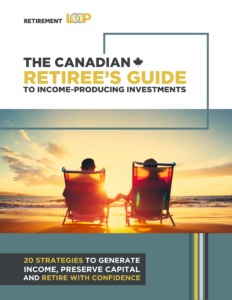Most Canadians understand the importance of having a budget while saving for retirement—but few realize just how critical budgeting becomes after you retire.
While your working years are about maximizing savings and staying invested, retirement introduces a new challenge: spending wisely without outliving your money.
One of the most common questions from retirees is:
“How do I protect my portfolio against a market correction?”
While you can’t control the markets, you can control how much you withdraw and when. And that starts with a retirement budget tailored to each phase of your journey.
The Four Phases of Retirement
Just like your working life has seasons, so does your retirement. These four stages—Before You Go, Go-Go, Slow-Go, and No-Go—help define your spending needs and investment strategy over time.
Planning with these stages in mind enables you to build an agile retirement budget that grows, flexes, and contracts as needed—while keeping your long-term financial health intact.
1. Before you Go: The Accumulation Years
This is the “pre-retirement” phase, which often lasts longer than retirement itself. It’s the period when you’re actively saving, investing, and preparing for what lies ahead.
The most important principle here?
Pay yourself first. Systematic investing—through your RRSP, TFSA, or pension—is the cornerstone of a secure retirement.
But don’t stop there. This is also the time to envision the kind of retirement you want:
-
Will you travel regularly?
-
Do you want to help your children financially?
-
Will you buy a vacation home or downsize?
These answers will shape your savings targets and retirement age. The earlier you plan, the more flexibility you’ll have later.
Tips for this phase:
-
Use tools like a Projection Spreadsheet to explore different scenarios.
-
Adjust contributions between RRSPs, TFSAs, and other accounts based on your income and pension entitlements.
-
Stick with a consistent investing strategy that suits your goals and risk tolerance.
From GICs to REITs: A Complete Guide to Retirement Income in Canada

This free guide reviews 20 income-focused products. In the one-page summaries, we highlight the pros and cons, common mistakes to avoid, and who should use them.
We also created a rating system to highlight the difference between each product. The idea is to provide you with as much information as possible so you can make the right choice for your situation.
While there is no free lunch in finance, there are multiple ways to reach your retirement goals.
Download the Complete Guide to Retirement Income Products to discover which fits your retirement phase best.
2. Go-Go Years: The Fun Phase
The moment you retire, you enter the “Go-Go” phase. You’ve worked hard, saved diligently—and now it’s time to enjoy the rewards. For many Canadians, this phase lasts from their early 60s to around age 75.

This is when you’ll likely:
-
Travel more
-
Make larger discretionary purchases
-
Renovate your home or relocate
-
Spend on family or hobbies
However, this phase also presents a new challenge: shifting from saving to spending. Many retirees feel anxious about drawing down their portfolio.
That’s why having a flexible budget is key. You’ll want:
-
A base budget for regular expenses (housing, food, utilities)
-
A variable budget for travel, new cars, and other big-ticket items
Tips for the Go-Go years:
-
Reassess your plan annually: simulate “retiring now” each year to update your 12-month budget based on portfolio performance.
-
Postpone large purchases in down markets and increase spending during up years.
-
Use advanced budget tools to account for one-time gifts or lifestyle upgrades.
3. Slow-Go Years: Steady as It Goes
As you move into your mid-to-late 70s, travel slows down, energy levels shift, and your budget changes again.
While you’ll spend less on big adventures, your base expenses may stay the same—and some costs (like health care or home maintenance) could increase.
You might also want to adapt your home for aging-in-place or plan for more frequent medical appointments or services.
Tips for the Slow-Go phase:
-
Don’t reduce your budget too aggressively; changes should be gradual.
-
Consider future-proofing your home for mobility and comfort.
-
Explore downsizing or selling assets to unlock cash if needed.
4. No-Go Years: Health First, Finances Second
This final phase typically begins in your 80s or later, when cognitive or physical health changes become more significant. You may spend more time at home, require assisted living, or home care.
At this point, your budget shifts to reflect increasing healthcare needs, estate planning, and support services. You’ll have a reliable income stream if you’ve built a strong foundation with defined benefit pensions, CPP, OAS, or annuities.
If your strategy included gradually drawing down your portfolio or even “dying with zero,” this is the time to ensure you’ve preserved enough flexibility.
Tips for the No-Go phase:
-
Be cautious with plans to spend aggressively in earlier phases; longevity risk is real.
-
Keep a home as a backup asset, or ensure stable income from guaranteed sources.
-
Review estate plans and consider early inheritance options or charitable giving if desired.
Final Thoughts: Plan Long, Adjust Yearly
Planning for retirement is much like planning a long road trip. You need a map for the big picture, but you’ll also need to reassess regularly, adjusting for weather, detours, and unexpected stops along the way.
One of the best habits you can develop is to “retire each year.” That means checking in annually with your budget, income, and lifestyle expectations. That way, you’re not just reacting to market corrections—you’re steering your retirement journey with confidence.

Ready to build a retirement income plan that fits your lifestyle?
From simple GIC ladders to advanced income strategies, the Canadian Retirees’ Guide to Income-Producing Investments covers 20 income-generating products with pros, cons, and tax insights for each.
👉 Get your free copy of the complete guide now and take the guesswork out of retirement planning.
